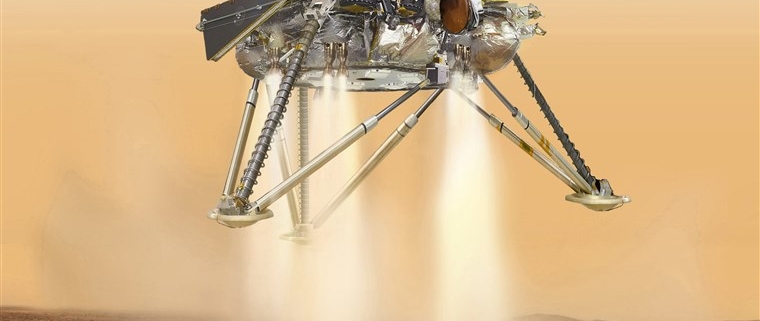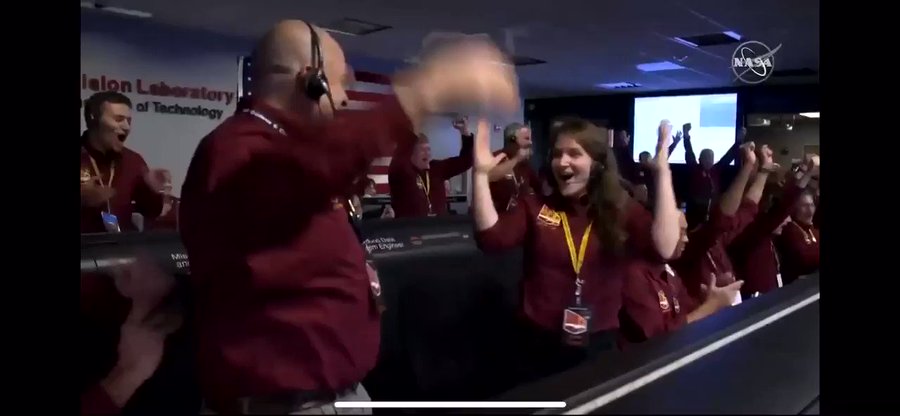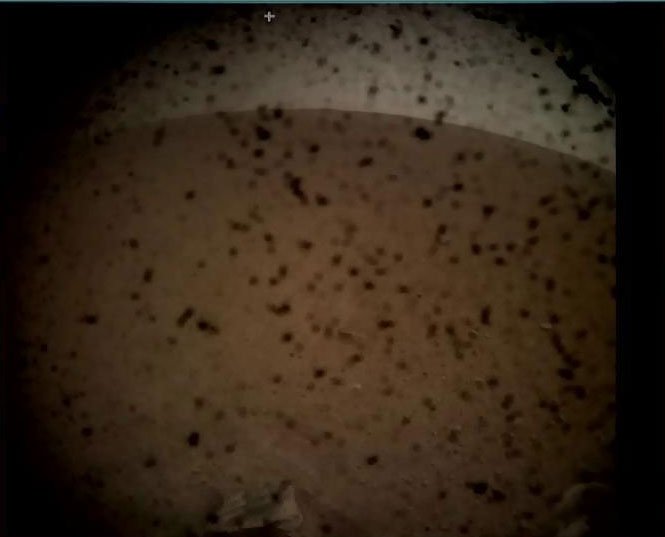NASA’s InSight craft lands safely on surface of Mars after ‘seven minutes of terror’
NASA’s InSight landed safely on Mars on Monday afternoon, with scientists now hopeful they’ll get a below-the-surface look at the Red Planet.
Shortly before 3 p.m. ET on Monday, scientists at Jet Propulsion Laboratory in Pasadena, California, cheered, hugged and traded high-fives as their prized craft safely landed on the Red Planet and started sending back its first images.
In a tweet of the picture, NASA said: “Wish you were here!”
InSight will spend the next few hours cleaning its camera lens and unfurling its solar arrays.
Once NASA confirms that the solar arrays have been properly deployed, engineers will spend the next three months preparing the lander’s science instruments to begin collecting data.
The InSight lander arrived on Mars’ surface by surviving what NASA called “seven minutes of terror” as its prized craft decelerated from 12,300 mph to 5 mph at landing.
“We can’t joystick the landing, so we have to rely on the commands we pre-program into the spacecraft. We’ve spent years testing our plans, learning from other Mars landings and studying all the conditions Mars can throw at us. And we’re going to stay vigilant till InSight settles into its home in the Elysium Planitia region.”
Here are some of the details about InSight’s journey:

THE MISSION
NASA wants to get a comprehensive look beneath the Martian surface and collect data about the planet’s crust, mantle, and core with a 16-foot dig below. It’ll hopefully answer the basic question of whether Mars could have supported life.
InSight is short for the projects formal name, the Interior Exploration using Seismic Investigations, Geodesy and Heat Transport.
DISTANCE AND COST
InSight has been in flight since May 5 when it blasted out of Vandenberg Air Force Base in California, traveling 301 million miles to Mars at a mission cost of $850 million.
SHELF LIFE
For the next two years (or one Mars year), scientists hope to collect data that’ll show how micro-organisms might have once existed there. The craft is built to last at least two years and with any luck, it could keep working for another two years behind that, said NASA chief scientists Jim Green.
“It could last a couple more years and answer questions that maybe we haven’t even thought of yet — how cool is that?” Green told NBC News on Monday.
It’ll likely just sit there and collect dust for time immemorial, joining other spent craft now on Mars, such as Viking 1 and Mars Pathfinder.















